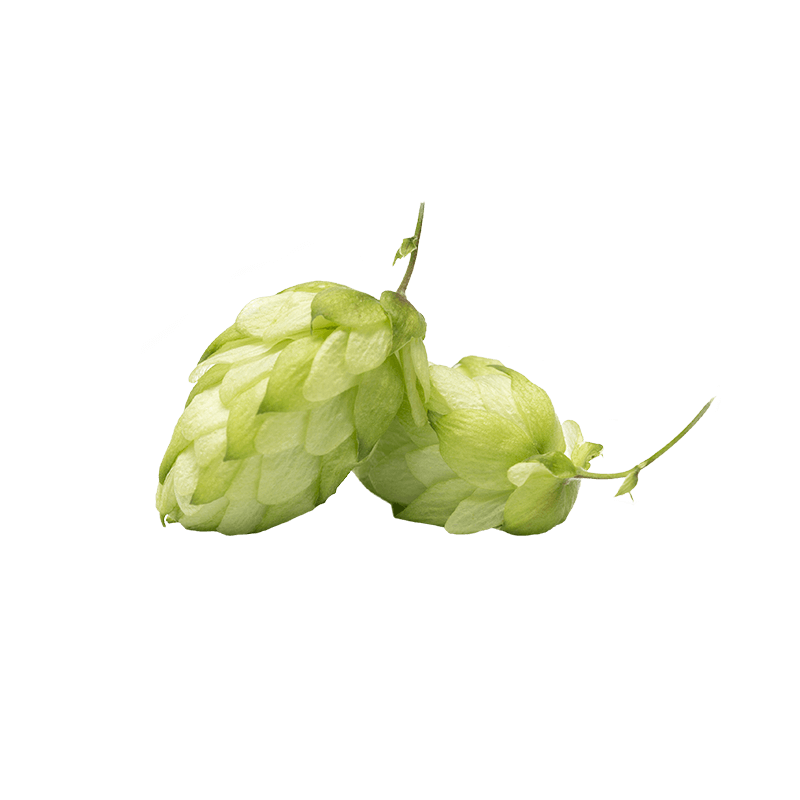
Hops
Latin name
Origin
Used part
Active components
Resins (alpha and beta acids): responsible for the bitter flavour and calming effect.
Essential oil (2-Methyl-3-buten-2-OL): provide the typical aroma, but also have a calming action.
Phenols: antioxidants.
Phytoestrogens: have an effect similar to oestrogens. Given that these substances are not always desirable, they are sometimes removed from the extracts.
Usage
Bibliographical references
- The extract from hop cones (Humulus lupulus) as a modulator ofoxidative stress in blood platelets.
Olas B, Kolodziejczyk J, Wachowicz B, Jędrejek D, Stochmal A,Oleszek W.
Platelets. 2011;22(5):345-52.
http://www.ncbi.nlm.nih.gov/pubmed/21351847
- Sedating effects of Humulus lupulus L. extracts.
Schiller H, Forster A, Vonhoff C, Hegger M, Biller A,Winterhoff H.
Phytomedicine. 2006 Sep;13(8):535-41.
Pubmed: http://www.ncbi.nlm.nih.gov/pubmed/16860977
- Effects of beer and hop on ionotropic gamma-aminobutyricacid receptors.
Aoshima H, Takeda K, Okita Y, Hossain SJ, Koda H, Kiso Y.
J Agric Food Chem. 2006 Apr 5;54(7):2514-9.
Pubmed: http://www.ncbi.nlm.nih.gov/pubmed/16569037
- The Sedative Effect of Non-Alcoholic Beer in HealthyFemale Nurses
Lourdes Franco, Cristina Sanchez, Rafael Bravo, Ana B.Rodrıguez, Carmen Barriga, Eulalia Romero, Javier Cubero
PLoS One. 2012; 7(7): e37290.
PMC: http://www.ncbi.nlm.nih.gov/pmc/articles/PMC3399866/
- The sedative effects of hops (Humulus lupulus), acomponent of beer, on the activity/rest rhythm.
Franco L, Sánchez C, Bravo R, Rodriguez A, Barriga C, JuánezJC.
Acta Physiol Hung. 2012 Jun;99(2):133-9.
Pubmed: http://www.ncbi.nlm.nih.gov/pubmed/22849837
- [The sedativ-hypnotic principle of hops].
Hänsel R, Wohlfart R, Schmidt H.
Planta Med. 1982 Aug;45(4):224-8.
Pubmed: http://www.ncbi.nlm.nih.gov/pubmed/17396916
- New insight in the neuropharmacological activity ofHumulus lupulus L.
Zanoli P, Rivasi M, Zavatti M, Brusiani F, Baraldi M.
J Ethnopharmacol. 2005 Oct 31;102(1):102-6.
Pubmed: http://www.ncbi.nlm.nih.gov/pubmed/16046089
- Pharmacognostic and pharmacological profile of Humuluslupulus L.
Paola Zanoli ∗, Manuela Zavatti
J Ethnopharmacol. 2008 Mar 28;116(3):383-96.
Pubmed: http://www.ncbi.nlm.nih.gov/pubmed/18308492
The health claims that feature on our website in relation to the plants contained in our products are compliant with the list of health claims awaiting final assessment by the Community authorities (cf. website of the European Commission: http://ec.europa.eu/nuhclaims/). However, they may be subject to modification following their assessment by the national competent authorities.
The health claims relating to other nutrients or substances contained in our products that feature on our site are compliant with Regulation No. 432/2012 of the Commission of 16 May 2012 which establishes a list of authorised health claims authorised in relation to food products, other than those in reference to the reduction of the risk of disease as well as community-based development and child health (cf. website of the European Commission: http://ec.europa.eu/nuhclaims/).

 Belgique
Belgique  België
België  France
France  Italia
Italia  Portugal
Portugal  España
España  United Kingdom
United Kingdom  Κύπρος
Κύπρος 